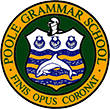Biology
A high-quality science education provides the foundations for understanding the world through the specific disciplines of biology, chemistry and physics. Science has changed our lives and is vital to the world’s future prosperity, and all pupils should be taught
essential aspects of the knowledge, methods, processes and uses of science. Through building up a body of key foundational knowledge and concepts, pupils should be encouraged to recognise the power of rational explanation and develop a sense of excitement and curiosity about natural phenomena. They should be encouraged to understand how science can be used to explain what is occurring, predict how things will behave, and analyse causes.
Year 8 Curriculum Content
|
Theme |
Content |
Assessment |
|
1 Circulation (9 weeks) |
· K of parts of a circulatory system. K & U effect of surface area to volume ratio on need for circulatory system. K parts of the heart. S Safely dissect a heart. S Making careful observations of thickness of heart walls and using appropriate SI units. K & U using models and appreciating their limitations. K & U structure of an artery, vein and capillary and relating their structure to their function and influence of pressure. S make careful observations and produce scientific drawings. S link microscope properties with macroscopic effects. K the components of the blood and their functions. S Select and use equipment and techniques that are appropriate for the measurements being made, identify control variables, draw conclusions from data |
GCSE style Assessed 6 mark question (with structure help)
40-minute short-answer Topic Test |
|
2 Nutrition and Digestion (14 weeks) |
K of components of a balanced diet and what the body utilises them for. S Make careful observations using appropriate SI units. S solve simple formula. S identify control variables S draw conclusions from data. K & U the consequences of having an unbalanced diet. S Identify links between the three subject disciplines. K & U of the need for digestion and how it occurs. K & U organs of the digestive system and their functions. S link microscope properties with macroscopic effects |
40 minute short answer test |
|
3 Skeleton and Movement (5 weeks) |
K key bones of the skeleton. K & U the functions of the skeleton. K & U structure and function of joints. K & U concept of antagonistic muscles. S Select and use equipment and techniques that are appropriate for the measurements being made, Identify control variables, Use appropriate SI units, Identify links between the three subject disciplines. |
Online quiz and Lab Report |
|
4 Microorganisms (9 weeks) |
K types of microorganism. K & U diseases caused by microorganisms and how your body defends against it. K Uses of microorganisms. K & U Aseptic technique, it’s importance and conditions needed for microorganism reproduction. K & U vaccinations and how they work. S Interpret and draw appropriate scientific diagrams, Draw conclusions from data, Explain why theories change over time, Link microscope properties with macroscopic effects, Identify control variables, Select and use equipment and techniques that are appropriate for the measurements being made, calculate a mean. |
40 minute test |


